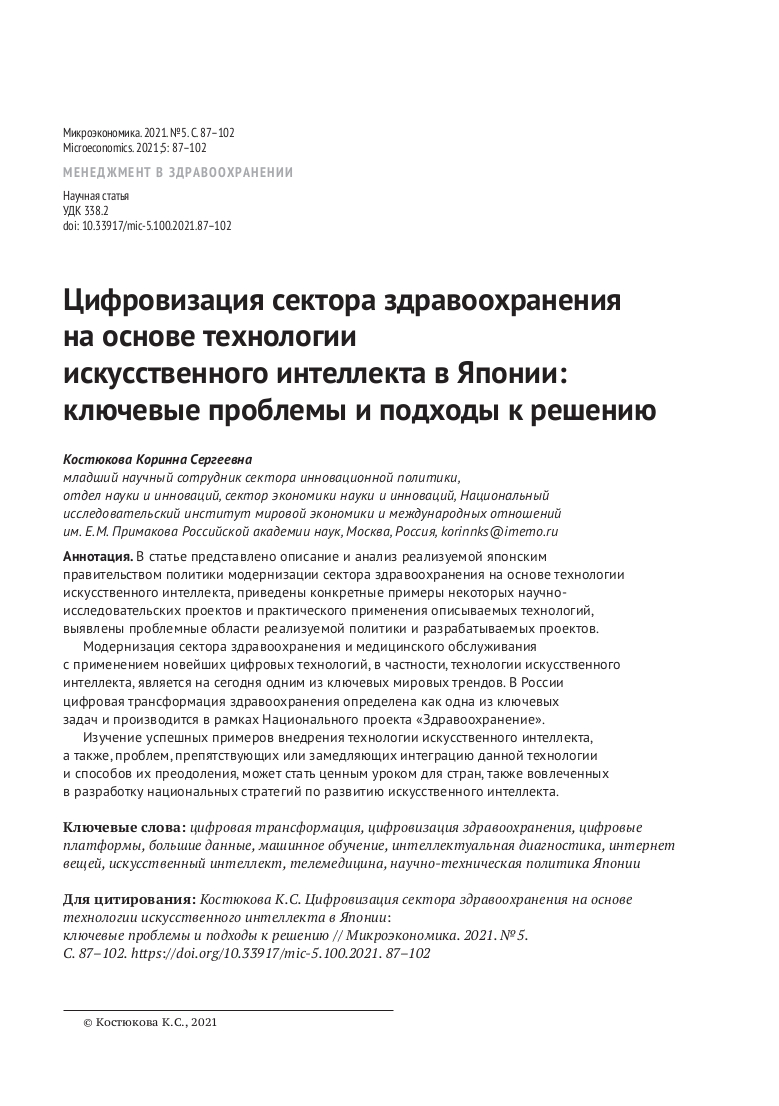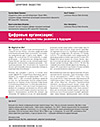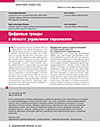Voice Assistant as a Corporate Competitive Strategy at the Healthcare Market
DOI: 10.33917/es-1.193.2024.132-137
The article describes the competitive strategy of a pharmaceutical company in the context of digitalization of society. It describes how the patient’s voice assistant allows the company to influence levels of demand, receive information about the behavior patterns of the target audience and increases the brand’s points of contact with the target audience. The technology of developing a voice assistant for the healthcare industry is presented, and mechanisms of influence on the target audience are described.
References:
1. Kovtyukh G.S. Osnovnye tendentsii razvitiya farmatsevticheskogo rynka v Rossii [Main Trends in the Development of the Pharmaceutical Market in Russia] Lechebnoe delo, 2023, no 2, pp. 134–140, DOI 10.24412/2071-5315-2023-12888, EDN GGLUIQ
2. Arzhanova K.A. Sovremennye PR-tekhnologii prodvizheniya kompanii [Modern PR Technologies for Company Promotion]. Kompetentnost’, 2020, no 5, pp. 30–35, available at: https://cyberleninka.ru/article/n/sovremennye-pr-tehnologii-prodvizheniya-kompanii-1
3. Vinichuk O.Yu. Sovremennye metody prodvizheniya farmatsevticheskikh kompaniy na regional’nykh farmatsevticheskikh rynkakh v usloviyakh tsifrovizatsii biznesa [Elektronnyy resurs]. Vestnik evraziyskoy nauki, 2023, vol. 15, no 3, available at: https://esj.today/PDF/77ECVN323.pdf
4. Prentice С., Loureiro S.M., Guerreiro J. Engaging with intelligent voice assistants for wellbeing and brand attachment. Journal of Brand Management, 2023, no 30, pp. 449–460. 10.1057/s41262-023-00321-0 Engaging with intelligent voice assistants for wellbeing and brand attachment.
5. McLean G., Osei-Frimpong K., Barhorst J. Alexa, do voice assistants influence consumer brand engagement? — Examining the role of AI powered voice assistants in influencing consumer brand engagement. Journal of Business Research, 2021, no 124, pp. 312–328. 10.1016/j.jbusres.2020.11.045.
6. Zuenkova Yu.A., Bogdanovich S.T. Beyond the Pill — strategiya marketinga otnosheniy na farmatsevticheskom rynke [Beyond the Pill —Relationship Marketing Strategy in the Pharmaceutical Market]. Mikroekonomika, 2023, no 5, pp. 39–47, available at: https://doi.org/10.33917/mic-5.112.2023.39–47
7. Andriyanova E.A. Sotsial’noe doverie v meditsine: vozmozhnosti onlayn-kommunikatsii: Nauka kak obshchestvennoe blago: Sb. Nauchnykh statey Vtorogo mezhdunarodnogo kongressa Russkogo obshchestva istorii i filosofii nauki. Sankt-Peterburg, 27–29 noyabrya 2020 g. [Social Trust in Medicine: Online Communication Opportunities: Science as a Public Good: Sat. Scientific Articles of the Second International Congress of the Russian Society for History and Philosophy of Science. St. Petersburg, November 27–29, 2020]. Sankt-Peterburgskiy gosudarstvennyy universitet; Russkoe obshchestvo istorii i filosofii nauki, vol. 5. Moscow, Mezhregional’naya obshchestvennaya organizatsiya “Russkoe obshchestvo istorii i filosofii nauki’, 2020, pp. 90–93, EDN ZWEESO
8. Porter M. Konkurentnaya strategiya. Metodika analiza otrasley i konkurentov. Moscow, Al’pina Pablisher, 2015, 456 p.














